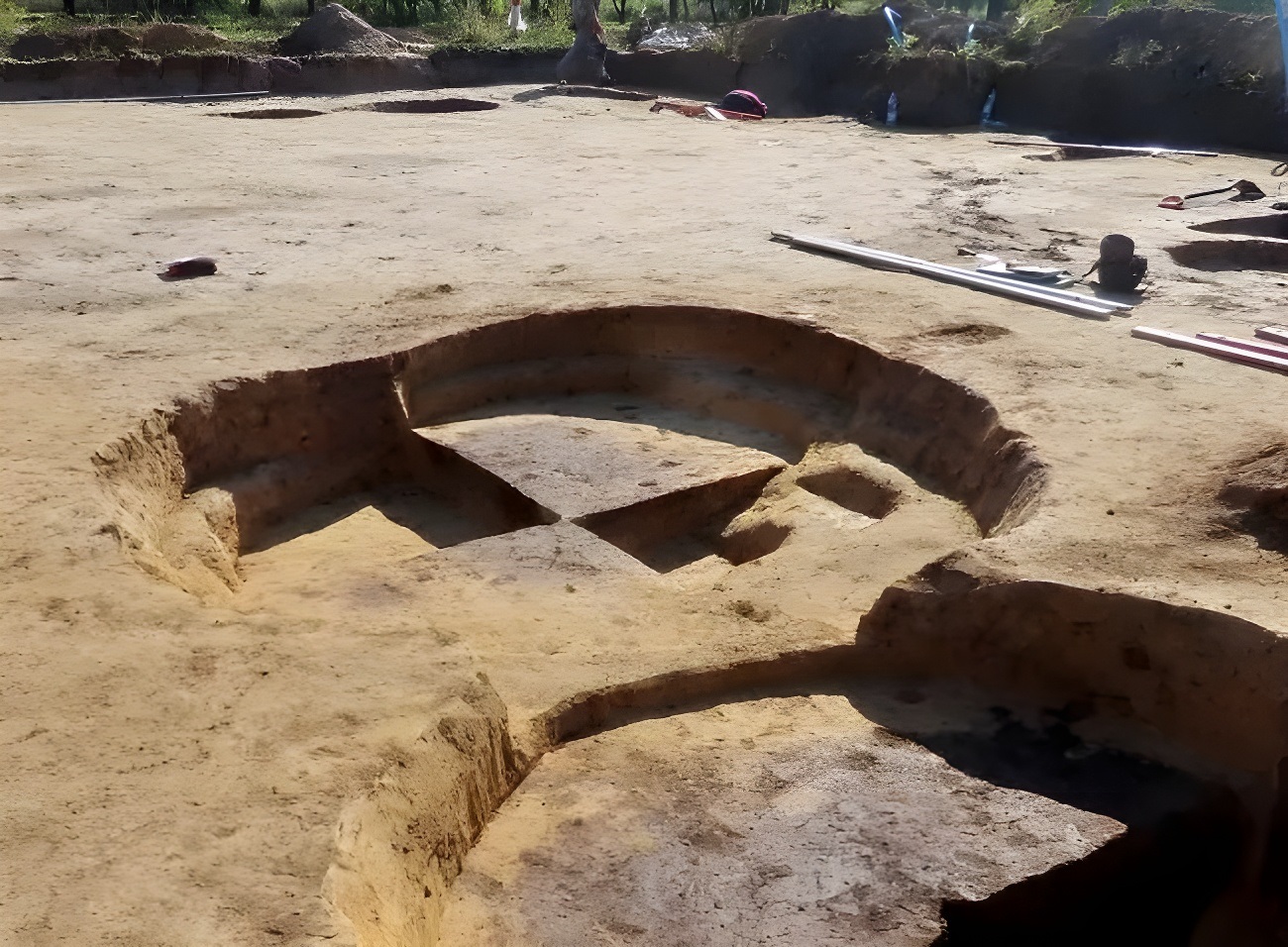Excavations in Sandomierz-Mokoszyn (Świętokrzyskie), Poland, have uncovered one of the earliest examples of a Neolithic “long house” in the Sandomierz Upland, dating back to 5300-4900 BC.
The initial aim of the excavation was to confirm the existence of a settlement associated with the Funnelbeaker culture (3700-3200 BC), evidenced by large storage pits containing fragments of clay vessels, flint tools, stone millstones, and animal bones.
However, archaeologists also found an earlier Neolithic settlement from the Linear Pottery culture, associated with the first farmers who migrated to this region from Transcarpathia.
The Linear Pottery culture, one of the early Neolithic cultures in Central and Eastern Europe, flourished from around 5500 to 4500 BC. Its name is derived from the characteristic linear decorations on ceramic vessels, often filled with white paste.
The team found traces of a “long house”, constructed using a post-and-beam technique and aligned along a north-south axis. The structure was approximately 6 metres wide and over 20 metre in length.
“The discovery of the longhouse is the first of its kind in the Sandomierz Upland,” emphasized Dr. Hab. Florek. Houses of this type were previously known from Kujawy, Subcarpathia, and Lesser Poland.
According to the researchers, the discovery is significant as it suggests a permanent settlement in the early Neolithic period, rather than a temporary encampment. It also demonstrates continuous habitation in the area over thousands of years.
Surrounding the structure are clay pits used to source material for constructing the walls of the long house, in addition to decorated ceramics, flint tools, and two pits containing objects made from imported obsidian (volcanic glass).
A fragment of a Neolithic vessel from the Lublin-Volhynia culture was also recovered, indicating a further phase of settlement activity.
Header Image Credit : Voivodeship Office for the Protection of Monuments in Kielce
Sources : PAP







